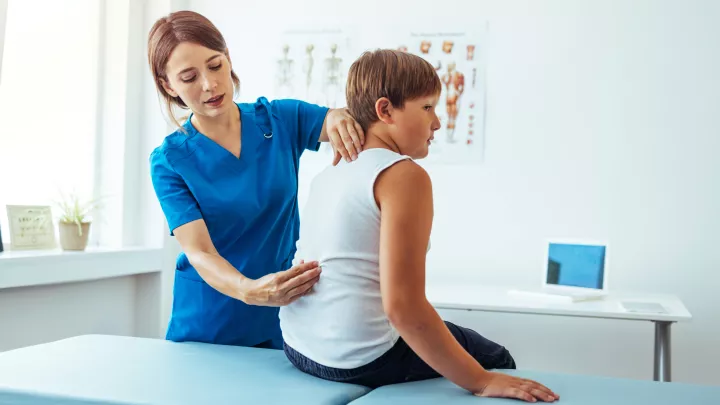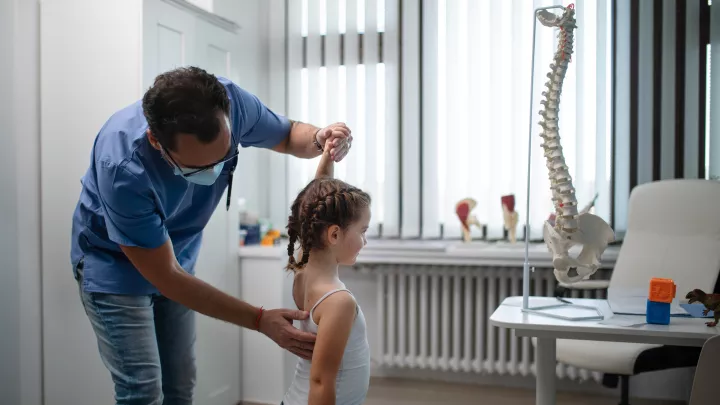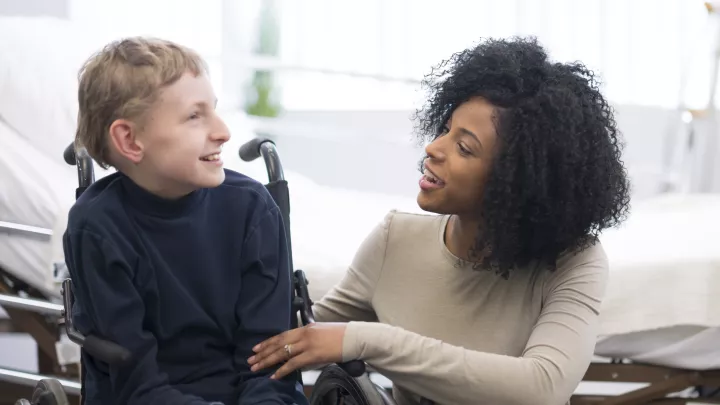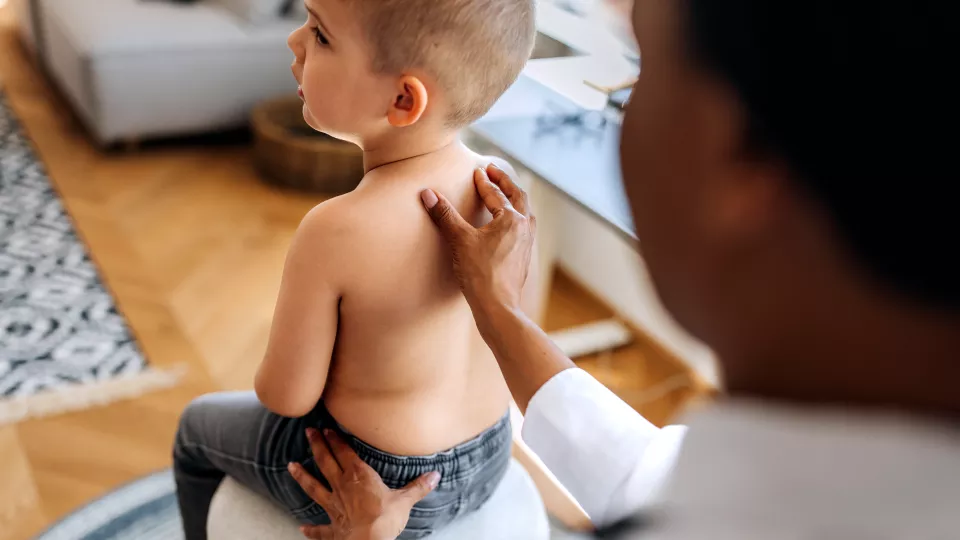
More Osteotomies Increase Curve Correction in Early Onset Scoliosis
It’s challenging to achieve significant curve correction during a spinal fusion “graduation” surgery for children with early onset scoliosis. Over the years, bone auto-fuses and stiffens around growing rods—making the spine tougher to straighten during this final procedure.
Now, a new study from Children’s Hospital Los Angeles has found that performing multiple osteotomies during graduation surgery can help enhance curve correction for these patients.
The study, which used the Pediatric Spine Group Study database, was led by Tyler Tetreault, MD, a pediatric spine surgeon in the Jackie and Gene Autry Orthopedic Center at Children’s Hospital Los Angeles. Dr. Tetreault presented the results at the Pediatric Orthopaedic Society of North America/European Paediatric Orthopaedic Society conference this spring, as well as at the Scoliosis Research Society meeting Sept. 10-14 in Barcelona, Spain.
“Overall, curve correction during graduation surgery is small,” Dr. Tetreault notes. “But we found that the more osteotomies you do, the more likely you are to achieve more curve correction, without increasing complications.”
Nearly double the correction
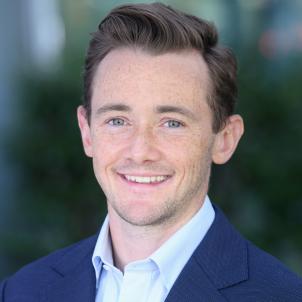
A posterior column osteotomy involves removing some bone from the spine—including bone that has auto-fused around growing rods—with the goal of making the spine more flexible.
To see if this additional step improves curve correction for children with early onset scoliosis, the team conducted a retrospective study of 832 patients. All children had undergone graduation surgery, which converts patients from growth-friendly instrumentation to spinal fusion.
Among those children, 657 patients, or 79%, did not receive any osteotomies during their spinal fusion. The remaining 175 patients, or 21%, received at least one osteotomy.
When researchers compared the two groups overall, they saw little difference in curve correction. But delving deeper into the data, they discovered that the number of osteotomies a child received was key. The team found that:
- The group without osteotomies had an average curve correction of 14 degrees.
- Those who received just one to four osteotomies had an average correction of 12 degrees.
- Children who received nine or more osteotomies had an average curve correction of 26.5 degrees—nearly double the correction of those who did not undergo any osteotomies.
Dr. Tetreault adds that the two groups were similarly matched in terms of the type of early onset scoliosis patients had. In addition, the type of growing rod did not impact curve correction, although the longer growth-friendly implants were in, the less correction was achieved. The osteotomy group overall had growing rods in place a little longer.
A proactive approach
One potential drawback of osteotomies is that they take time. In the study, researchers found that, on average, each osteotomy added 12 minutes of surgical time and 15 milliliters of blood loss.
“When you start talking about nine or more osteotomies, that can add up and be clinically significant,” he notes. “But there’s also a lot of variability in technique. For surgeons who do osteotomies regularly, I would expect blood loss and surgical time to be lower than the averages in the study.”
Importantly, osteotomies were not associated with an increase in complications. Given that safety profile and the results, Dr. Tetreault says he hopes more orthopedic surgeons will consider taking this extra step during spinal fusion for these patients.
“At Children’s Hospital Los Angeles, our team is very proactive about performing osteotomies at graduation surgeries,” he says. “After a spinal fusion, a child’s spine is set for life. We want to do everything possible to safely give each child the best possible result for their future.”
Study authors were Tyler A. Tetreault, MD; Tiffany N. Phan, BA; Tishya A.L. Wren, PhD; Michael J. Heffernan, MD; John B. Emans, MD; Lawrence I. Karlin, MD; Amer F. Samdani, MD; Ilkka J. Helenius, MD; Michael G. Vitale, MD; Pediatric Spine Study Group; and Lindsay M. Andras, MD.
